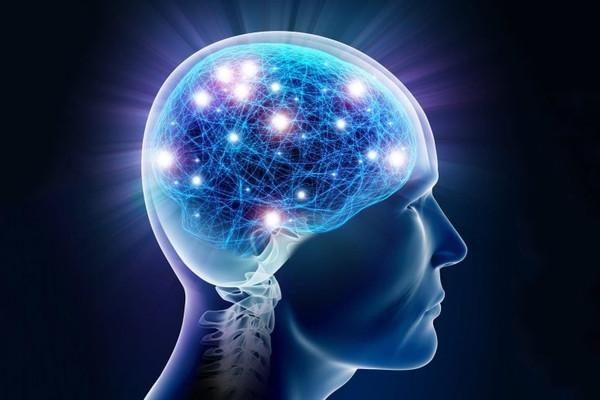5 Incredible Ways Exercise Improves Brain Function
Curated from: scitechdaily.com
Ideas, facts & insights covering these topics:
12 ideas
·6.82K reads
45
1
Explore the World's Best Ideas
Join today and uncover 100+ curated journeys from 50+ topics. Unlock access to our mobile app with extensive features.
When you think of exercising more, what trade-offs come to mind?
A slimmer physique, improved cardiovascular health, maybe even the ability to turn heads in that bathing suit you’ve been dying to get into?
But have you thought about what exercise is doing for your brain?
Numerous studies have proven that exercise, particularly the kind that gets your heart pumping, has a whole host of positive effects on the brain, even to the point of enhancing its structure. Here are just five of the ways exercise improves your already miraculous brain.
101
877 reads
Exercise Turns Your Brain into a Pleasure Powerhouse
Exercise stimulates a rich concoction of feel-good chemicals in the brain, including dopamine, serotonin, endocannabinoids, and norepinephrine, according to the American Psychological Association (apa.org), each of which has different roles in managing stress, enhancing feelings of wellbeing, and promoting an active interest in life. If that wasn’t enough, exercise increases the number of dopamine receptors in the brain, meaning not only is your brain producing more of these happy chemicals, but it’s also better at enjoying them.
100
789 reads
According to the Greater Good Science Center (greatergood.berkeley.edu), exercise is so good at delivering pleasure to the brain that it’s successfully used to help patients suffering from the ravaging aftereffects of drug abuse. Additionally, it’s estimated that we all lose approximately 13 percent of our dopamine receptors each decade, says Greater Good, causing us to experience diminishing pleasure in everyday life as we age. Exercise can reverse this.
100
675 reads
Exercise Stimulates Neurogenesis
Harvard Health Publishing (health.harvard.edu) reports that exercise sparks neurogenesis, or the formation of new neurons, in the brain. We’re all born with approximately 100 billion neurons in the brain, which regenerate at a fast rate in our childhoods but slow as we mature. It was once thought that this eventually stopped completely, but it’s since been proven that neurogenesis can last a lifetime.
99
584 reads
In a study conducted at Massachusetts General Hospital (massgeneral.org), doctors experimented with lab rats to see if medicine could ignite neurogenesis. While it could, the neurons died before they had any potential. But when the rats were put through courses of exercises, not only did neurogenesis take place, the neurons were healthy and strong enough to last.
93
563 reads
Exercise Improves Memory and Learning
Speaking of neurogenesis, the hippocampus is one area of the brain that continues to create new neurons throughout our lifetimes, says the U.S. Centers for Disease Control and Prevention (cdc.gov). The hippocampus is integral to learning and memory formation. Multiple studies have shown that adults who exercise perform better on memory, learning, and decision-making tasks than their counterparts who don’t exercise.
98
497 reads
93
500 reads
Exercise Increases the Thickness of the Cerebral Cortex
The cerebral cortex is the outer covering of the largest part of the brain, the cerebrum. The cerebral cortex is associated with high-level, conscious thought patterns, including emotion, evaluation, reasoning, and language. And according to Johns Hopkins Medicine (hopkinsmedicine.org), exercise can thicken the cerebral cortex.
95
484 reads
Researchers speculate that some of the reason for this is that exercise, particularly aerobic, involves continually making split-second decisions. If you’re running, you’re always managing your environment so you don’t twist your ankle or tangle with a car. If you’re at the gym, you’re keeping your balance and monitoring your levels of exhaustion and thirst. In other words, your mind is working just as hard as your body is and the result is a thicker, stronger cerebral cortex.
93
409 reads
Exercise Improves Neuroplasticity
Neuroplasticity is a big word to describe how adaptable the brain is. From birth, the brain is malleable, says Scientific American (scientificamerican.com), able to change both physically and functionally in response to events like learning, new environments, injury, and disease. The greater its neuroplasticity, the better the brain can adjust to life events, from acquiring new job skills to relearning how to walk after an accident.
92
441 reads
Even just one workout session can elevate your brain’s neuroplasticity, according to PsyPost (psypost.org). The reasons are currently believed to be because exercise encourages the growth of new neural connections in the brain, and that exercise has a suppressant effect on gamma-Aminobutyric acid, or GABA, which inhibits certain types of neurotransmitters.
92
479 reads
Ready to jump into an exercise program
The CDC recommends getting 150 minutes of moderate exercise per week, or 75 minutes of intense exercise, or a combination of both. This should be spread out evenly over the course of the week. Talk with your doctor first to eliminate any concerns and to help create a plan that works best for you.
92
527 reads
IDEAS CURATED BY
CURATOR'S NOTE
This would tell you the correlation of mental and physical well-being.
“
Jersey Barcelona's ideas are part of this journey:
Learn more about scienceandnature with this collection
How to apply new knowledge in everyday life
Why continuous learning is important
How to find and evaluate sources of knowledge
Related collections
Similar ideas
9 ideas
Exercise and the Brain: The Neuroscience of Fitness Explored
neurosciencenews.com
2 ideas
How Neuroplasticity Changes the Brain
home.hellodriven.com
3 ideas
Read & Learn
20x Faster
without
deepstash
with
deepstash
with
deepstash
Personalized microlearning
—
100+ Learning Journeys
—
Access to 200,000+ ideas
—
Access to the mobile app
—
Unlimited idea saving
—
—
Unlimited history
—
—
Unlimited listening to ideas
—
—
Downloading & offline access
—
—
Supercharge your mind with one idea per day
Enter your email and spend 1 minute every day to learn something new.
I agree to receive email updates


